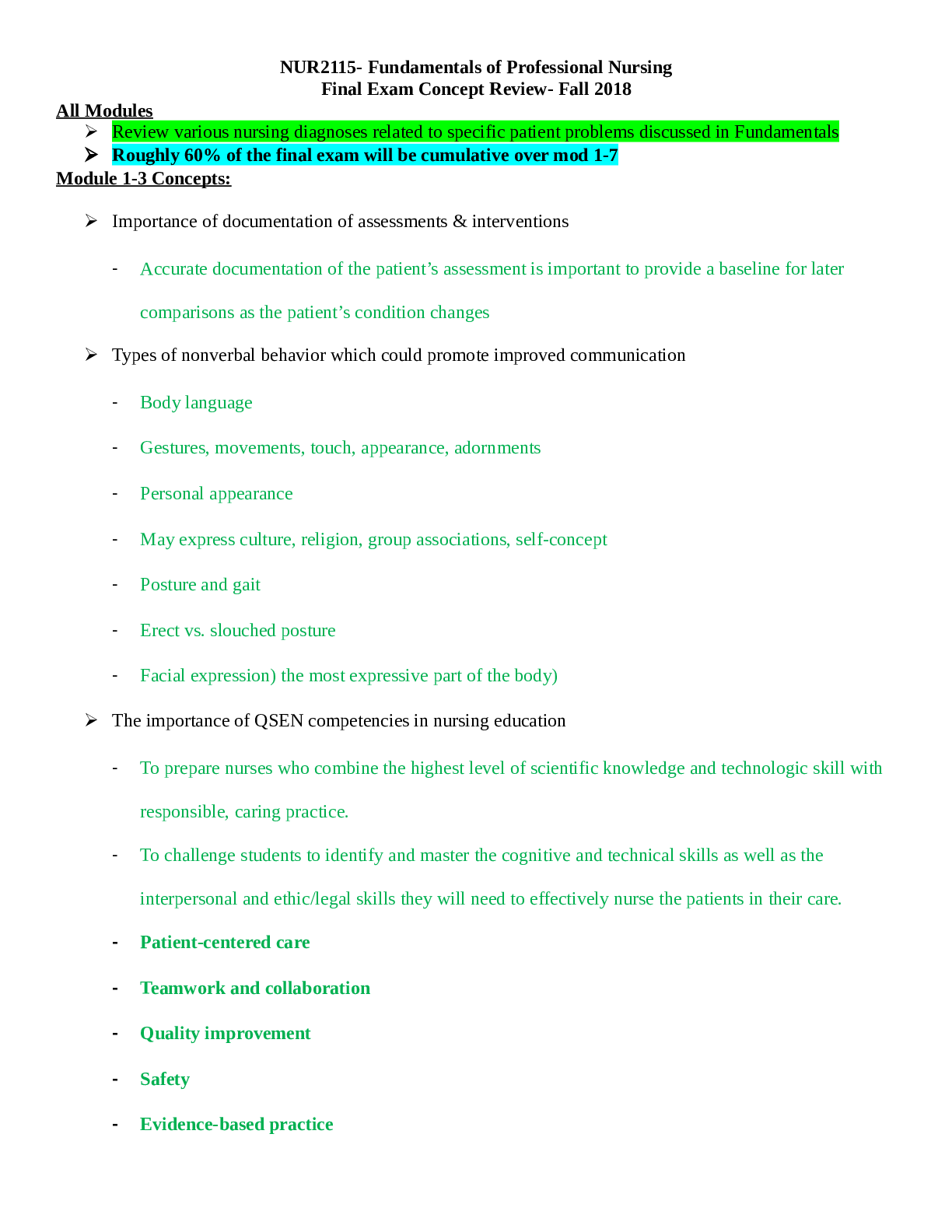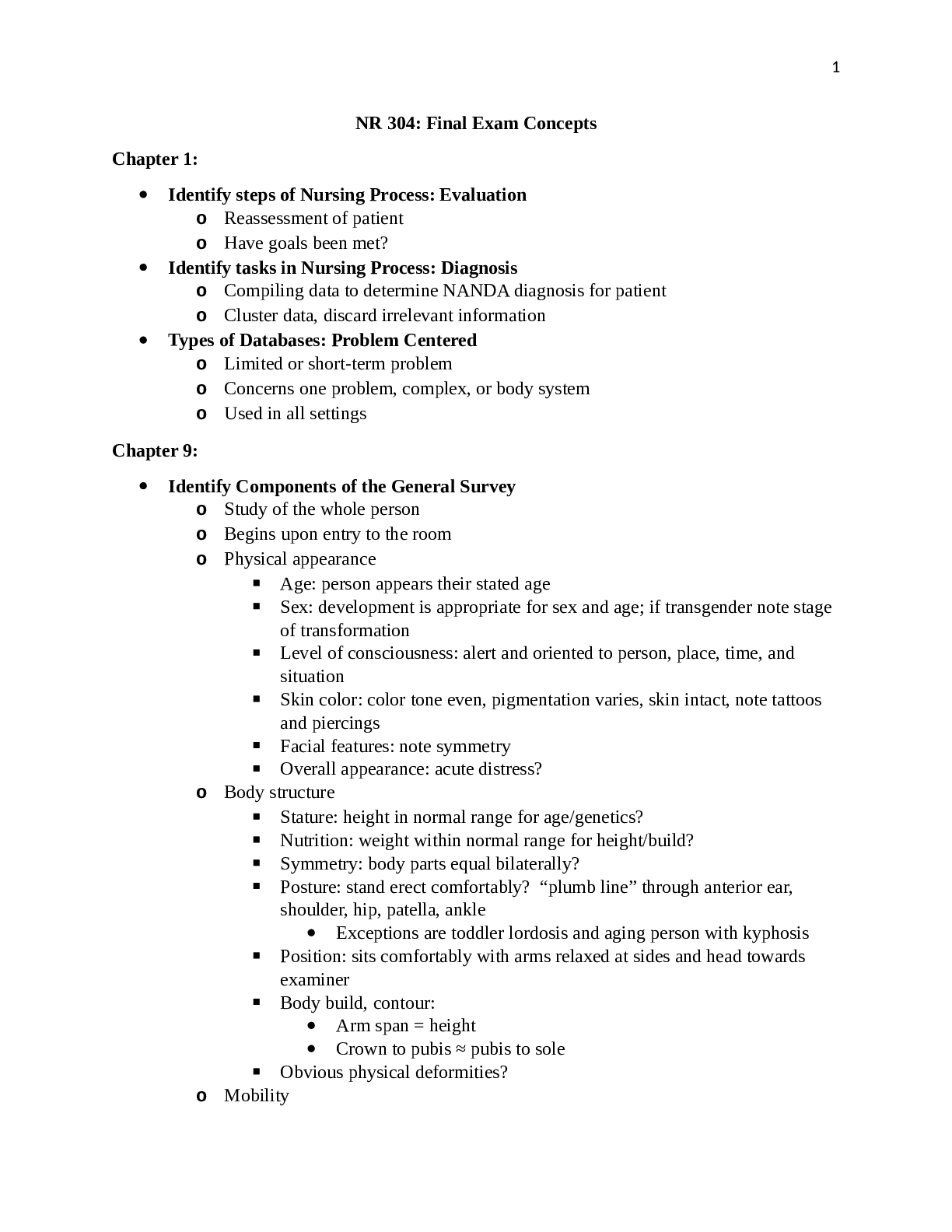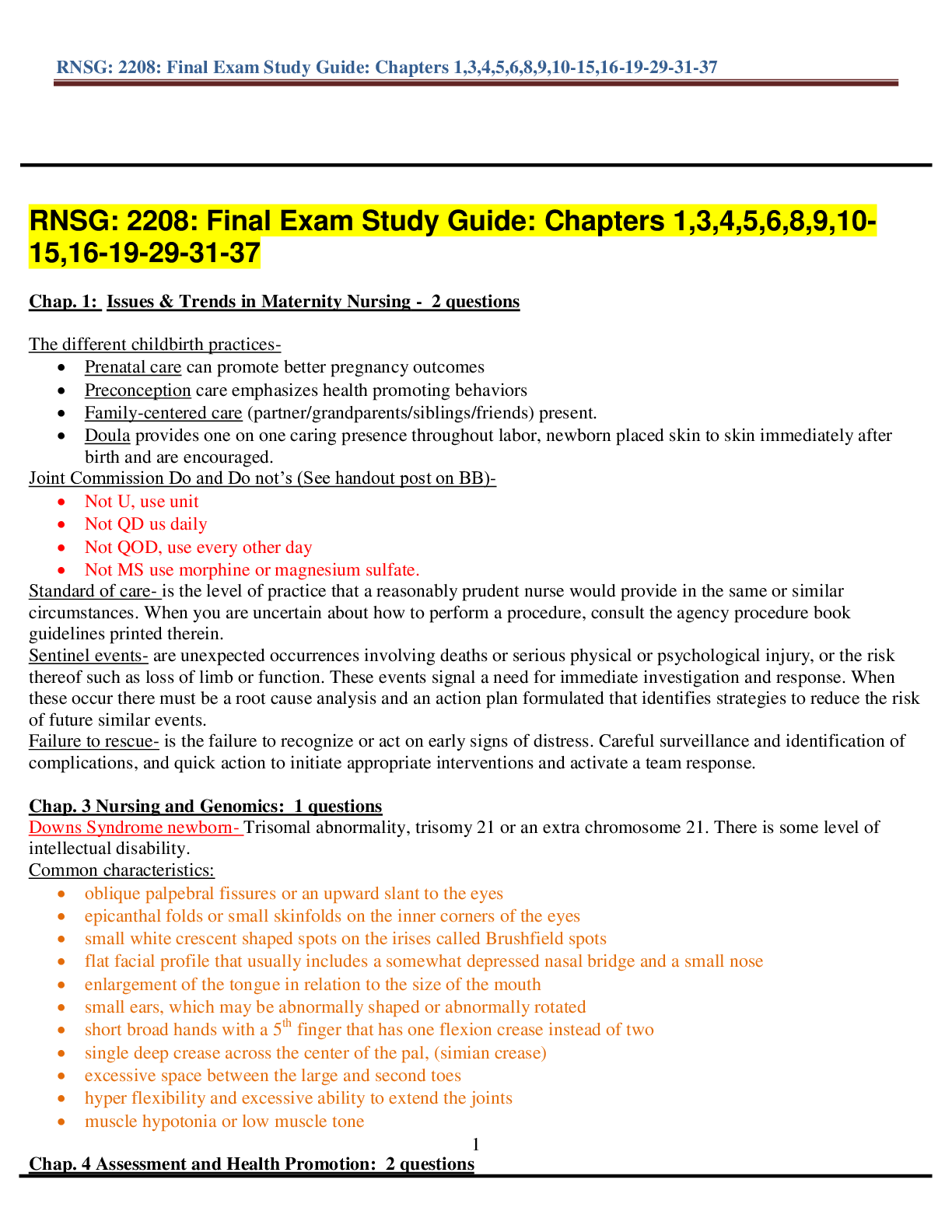*NURSING > STUDY GUIDE > NUR 2092 - Final Exam Concepts (All)
NUR 2092 - Final Exam Concepts
Document Content and Description Below
NUR 2092 - Final Exam Concepts 1. Know the difference between subjective and objective data. • Subjective: What a person says about themselves o Example: “My BP was 118/90 yesterday” and pa... in • Objective: What you observe through measurement, inspection, palpation, percussion, and auscultation o Examples: Meter readings, vital signs, and measurements 2. Barriers to communication. What are they? • The use of jargon • Emotional barriers and taboo • Lack of attention, interest, distractions, or irrelevance to the receiver • Difference in viewpoint • Physical barriers to non-verbal communication • Physical or mental disabilities (Physical: Hearing problems. Mental: Down Syndrome) • Language differences and difficulty understanding unfamiliar accents • Cultural difference. 3. Traps of interviewing-Chapter 3 • Providing false assurance or reassurance • Giving unwanted advice • Using authority • Using avoidance language • Distancing • Using professional jargon • Using leading or bias questions • Talking too much • Interrupting • Using “why” questions 4.Open ended questions vs closed ended questions. Know the difference and when to use them during the interview process. • Open ended: Questions asking for narrative information o When to use them: Use it to begin the interview Introduce a new section of questions Whenever the person introduces a new topic • Closed (direct) questions: Asking for specific information. Elicit a short, one- or two-word answer, a “yes” or “no” or a forced choice. o Used in an emergency to obtain information quickly 5. Components of a Health History -Chapter 4. • Biographical data • Source of history • Reason for seeking care • Present health or history of present illness • Past health • Family history • Review of systems • Functional assessment including activities of daily living 6. General survey and what it consists of. • Initial inspection • Observe posture • Hygiene • Facial expression • Assess breathing • Behaviors • Body language o Appearance o Body Structure and mobility o Behavior 7. Skills requisite of physical exam. Chapter 8. Know the correct order for assessment. (Inspection, palpation etc). Know the different order for abdominal exam. • Order: o Inspect – individual as a whole o Palpation - touch o Percussion – tapping for underlying structures o Auscultation - listening Abdomen: • Inspect • Auscultation • Percussion • Palpation 8. Know the normal range of respirations. Above and below that range, what's it called? • Normal Range: 12-20(21) • Dyspnea: Shortness of breath; < 12 • Tachypnea: Abnormally rapid breathing; >21 9. Lung sounds- Know difference between normal vs abnormal and where they are heard. • Normal – pattern changes without our awareness in response to cellular demands o Bronchial sometimes called tracheal or tubular o Bronchovesicular o Vesicular • Abnormal o Crackles or rales – periphery only – fluid in airways – high pitched, heard during inspiration o Wheezing – mucous noise during inspiration or expiration – louder during expiration o Rhonchi – rumbling, course sound, like a snore, heard during inspiration and expiration 10. Characteristics of pulse and how to document it. • Rhythm: Normal regular, even tempo o Rating: Force: • 3+: Full, bounding – anxiety, exercise – increased stroke volume • 2+: Normal • 1+: Weak, thread – low stroke volume • 0: Absent 11. Blood pressure cuff sizes and impact on blood pressure readings. • Cuff sizes: o Too small: Falsely high BP due to extra pressure to compress artery o Too large: Falsely low BP due to not being able to cut off blood vessel properly 12. Changes in blood pressure in the elderly caused by what? • African American’s, menopause, older age due to hardening of vessels, higher blood pressure • BP dependent on o Cardiac output – heart pumps more blood into blood vessels – pressure on container walls increase o Peripheral vascular resistance – vessels become smaller pressure to push becomes greater o Volume of circulating blood – blood tightly packed into arteries – more blood more pressure o Viscosity – thickness o Elasticity of vessel walls – stiff and rigid increased pressure is needed 13. Assessment of ALL pulses and their locations. (Apical, radial, popliteal, etc) • Temporal • Carotid • Apical (5th ICS, L Mid clavicular) • Brachial • Radial • Femoral • Popliteal • Posterior Tibial • Dorsalis pedis 14. Carotid pulse- location and abnormality is called? • Carotid is in the neck – groove between the trachea and sternomastoid muscle, medial to and along-side • Abnormal pulse = 1+ weak, thread • Below 60 = bradycardia • Above 100 = tachycardia 15. How does the physical assessment differ of newborn , toddler, adolescent and elderly. What is important to consider with each stage? What to do differently when performing exam with each age group? • Newborn – parent bonding /coping • Toddler – growth charts o Prenatal status – L&D – complications – full term o Accidents – injuries – illness – operations – allergies - medication • Adolescent – o HEEADSSS – Home – education – eating – activities – drugs – sexuality – suicide, depression - safety • Elderly – past health for 5 years – chronic illnesses, hospitalizations, operations, last exam, current medication, bring in meds, ADL’s 16. Diastolic vs Systolic. Know the differences. • Systolic: Pressure is maximum pressure felt on the artery during left ventricular contraction • Diastolic: Pressure is the elastic recoil, resting, pressure that the blood exerts constantly between each contraction 17. What is PERRLA? • Pupil • Equal • Round • React • Light Continued............................... [Show More]
Last updated: 1 year ago
Preview 1 out of 17 pages
Instant download

Buy this document to get the full access instantly
Instant Download Access after purchase
Add to cartInstant download
Reviews( 0 )
Document information
Connected school, study & course
About the document
Uploaded On
Jan 23, 2021
Number of pages
17
Written in
Additional information
This document has been written for:
Uploaded
Jan 23, 2021
Downloads
0
Views
210

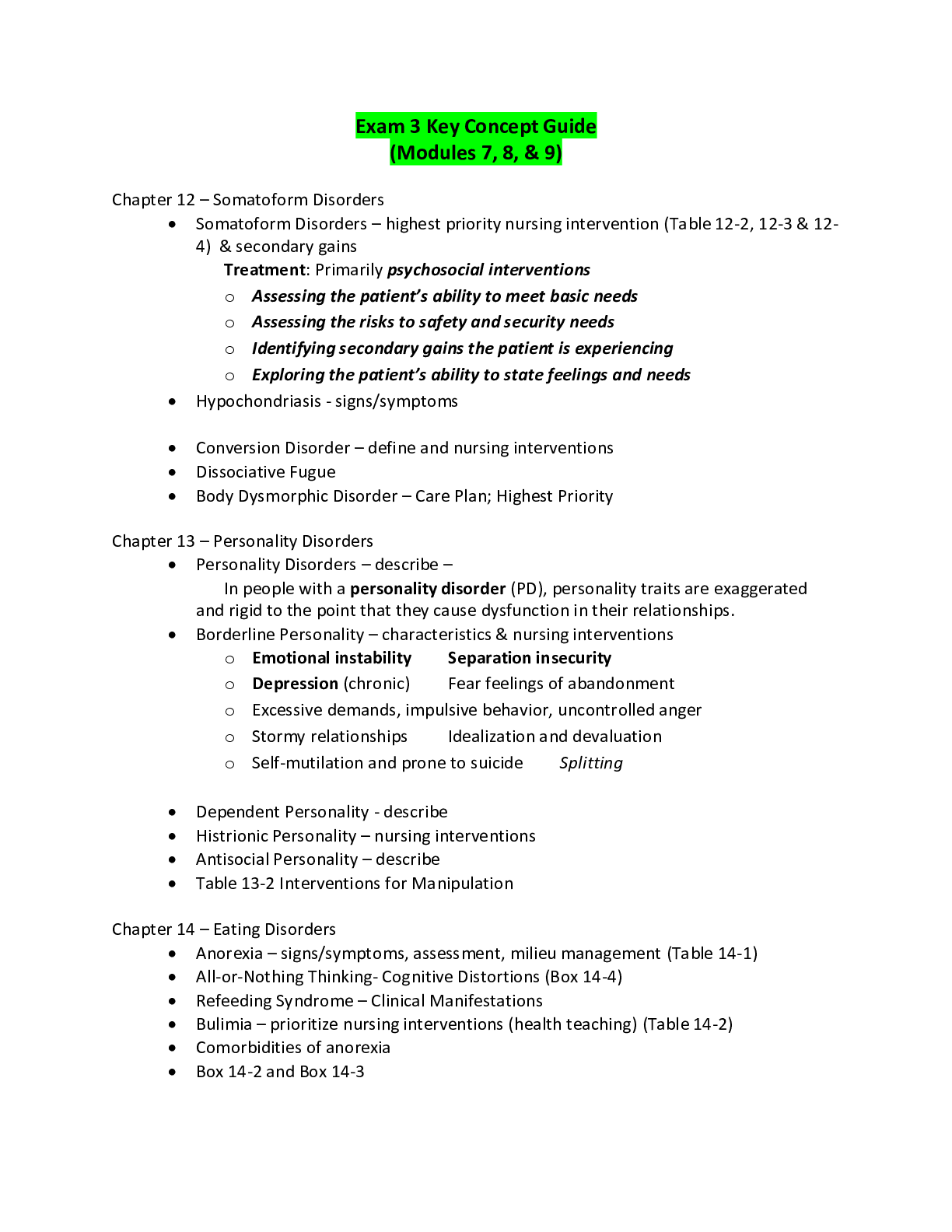



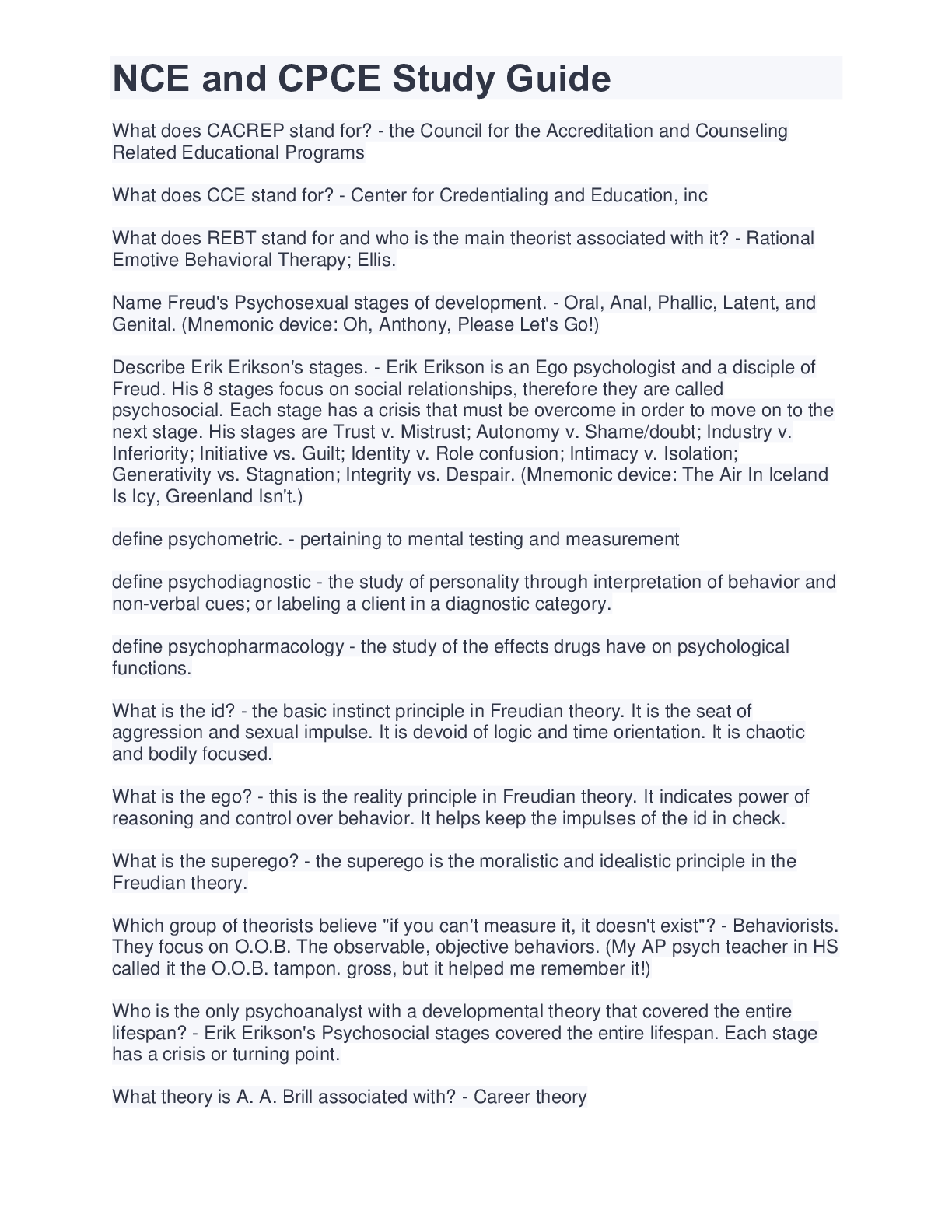
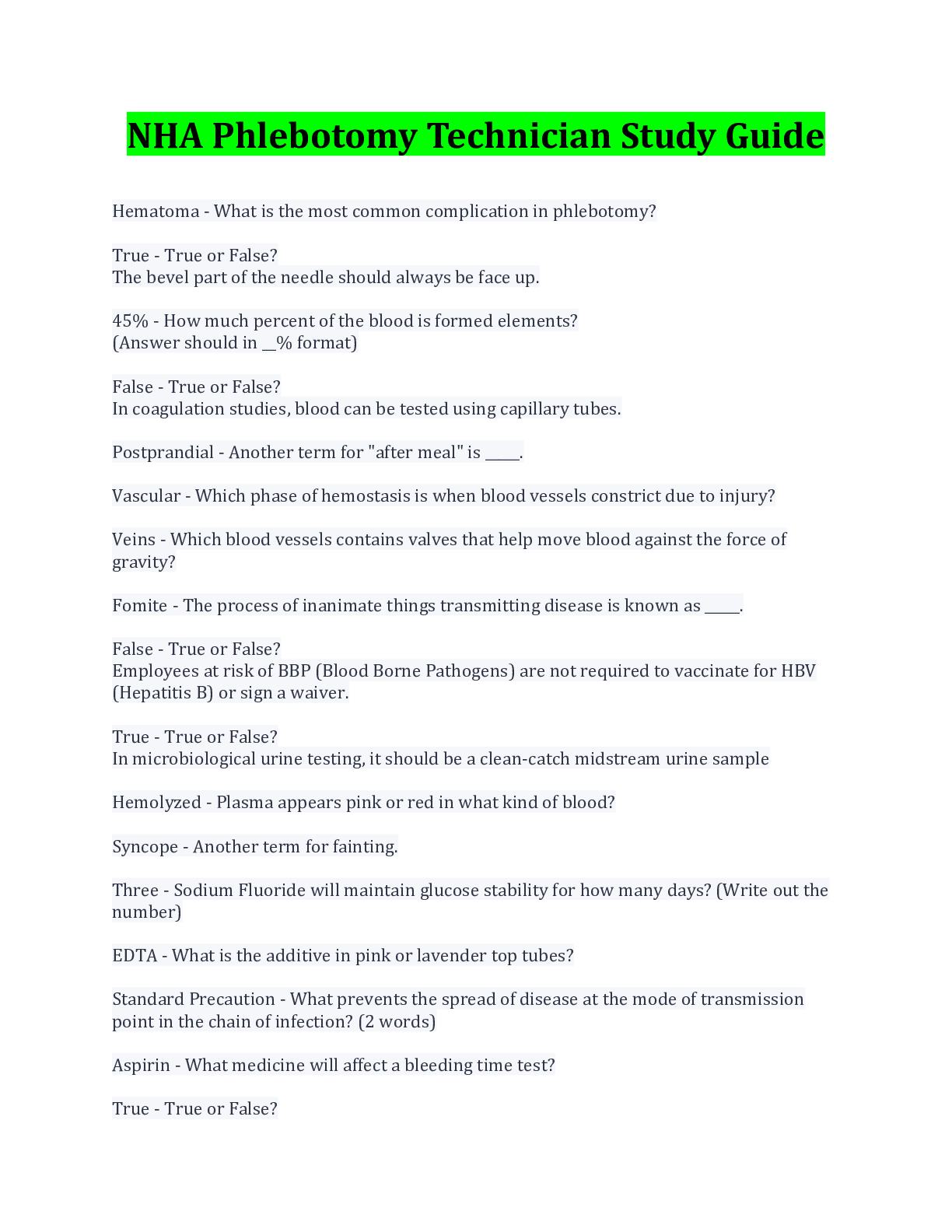

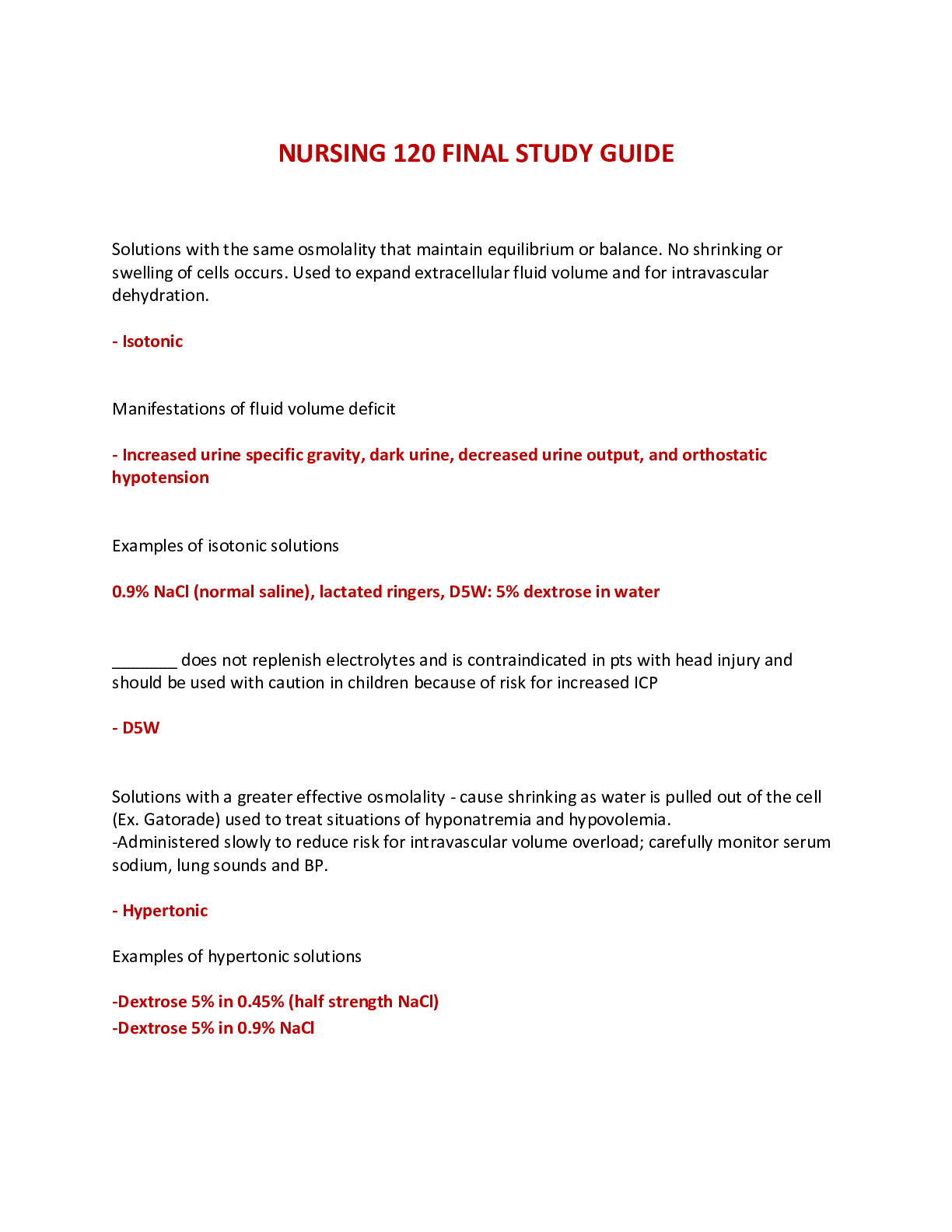
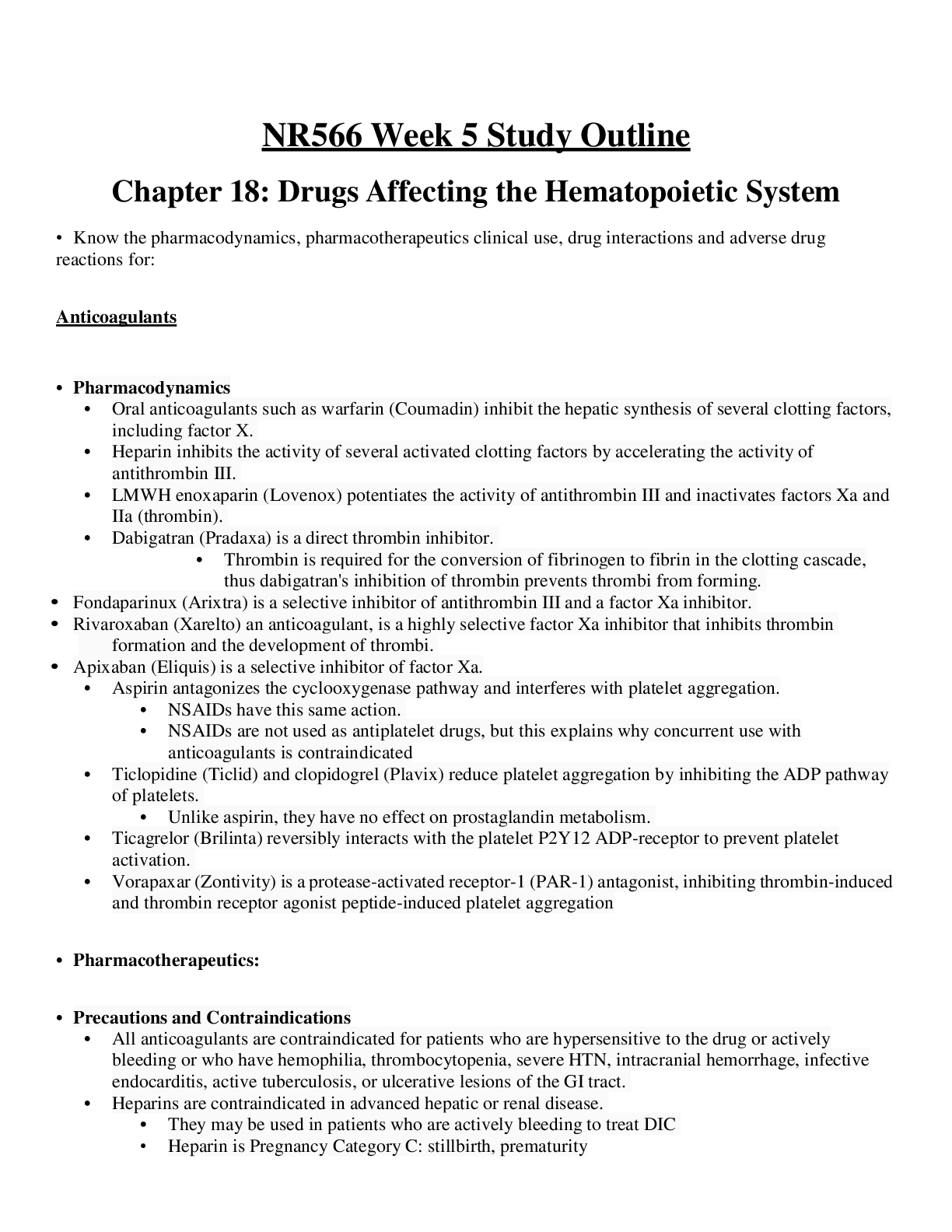




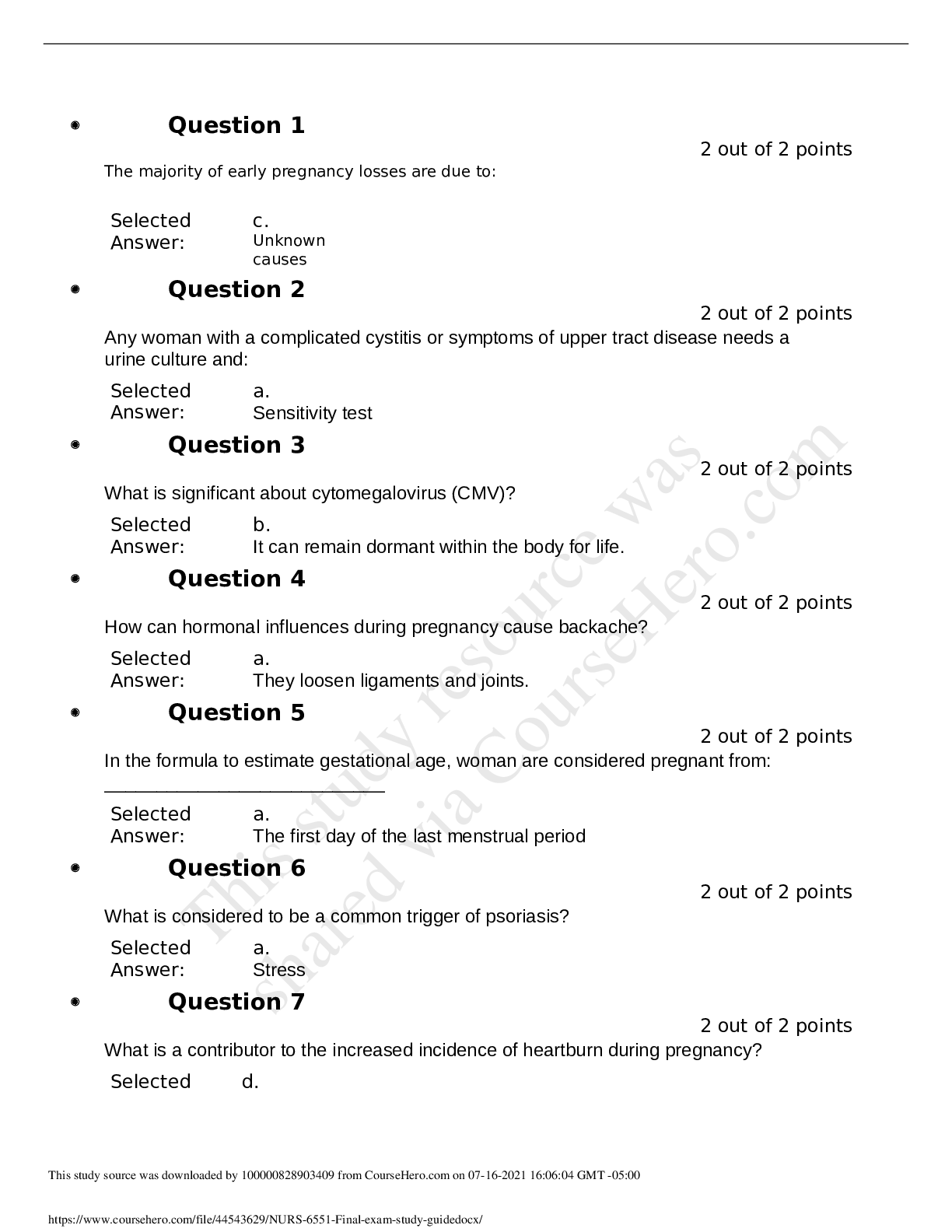



.png)

